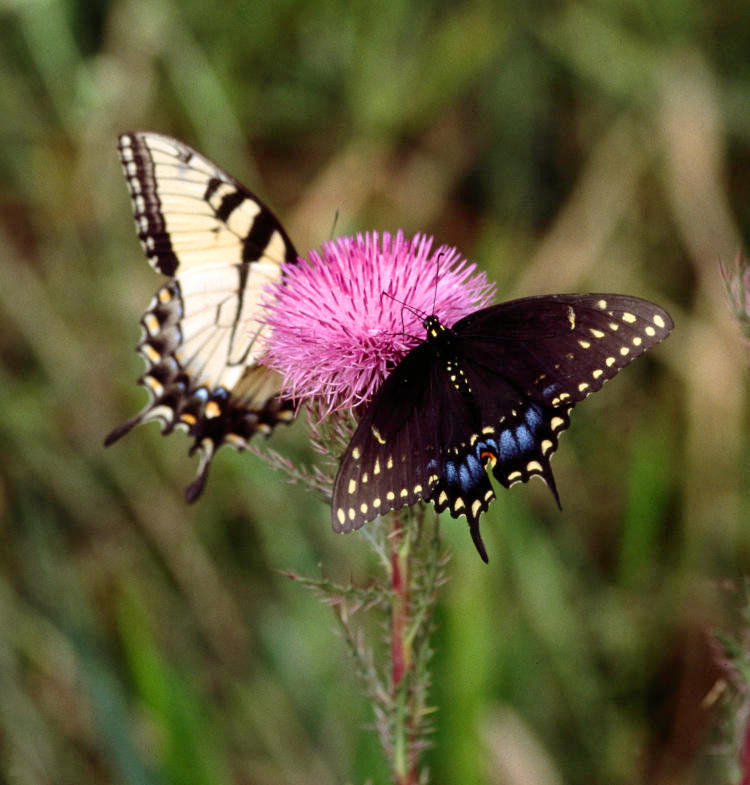I know, it’s been a slow week. Well, it hasn’t really, it just hasn’t been a posting week – my time is being spent doing such fun things like cursing at contractors who thought that using fourteen nails from a nail gun set at 200lbs was proper procedure for attaching a measly riser on deck stairs, but that’s not important right now. Another project is waiting on a replacement part and will be a while. Meanwhile, the photos I’m getting are largely the same damn things because I’m in the same damn places. At this very moment, I’m installing a new graphics driver which is taking forever, and I have my doubts that the monitor colors presently being displayed are accurate. So this week, a quick one (that might be a little off in color register.)

I think this is the only time that I’ve accomplished this, and it occurred in Florida in 1999. These are not two different species, but just one, eastern tiger swallowtails (Papilio glaucus.) The black one is a female, while the yellow one is likely a male, though the females also have a yellow phase – this can only be differentiated with a look at the top surface of the hindwings, facing away from us here. I was pleased to get both color patterns in one shot, and if memory serves, this was taken almost exactly 23 years ago, this coming Saturday – I have reasons for remembering the dates on this trip. It was a roadside field where the pollinators – mostly butterflies but a handful of moths and wasps – were ridiculously active, and I think I shot an entire roll of slide film while standing amongst the flowers.
With digital I would have undoubtedly shot more than 36 frames, but that’s because each frame doesn’t cost in terms of film and processing, so I’m far more inclined to take chances and discard what doesn’t work – that hurts a bit with slides, so I tended to fire off frames only when I was fairly confident of getting a keeper. There’s something to be said for both approaches: I probably would retain more images overall (while a lower percentage) from shooting digital in the same situation, but making the effort to lock in a good image is far better than simply hosing them around in the belief that something will be useful. Large format, for instance, is so labor-intensive and costly (in comparison at least) that photographers using it tend to be meticulous, virtually guaranteeing that everything is a solid image. And of course, such a format is a really bad choice for subjects as fleeting as this, so large format images tend to be landscapes or carefully-crafted portraits. Play to the strengths.



















































